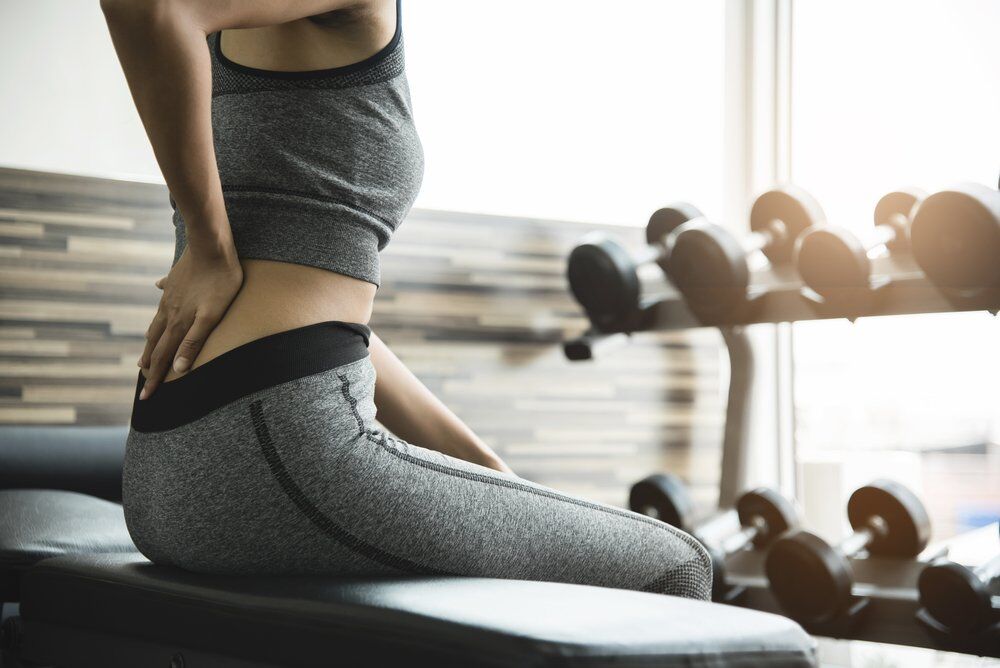
Reduce The Risk Of Injury On Your First Session Back
With gyms starting to open up again for the first time since March, the days of having to make-do with a pair of 10lb dumbbells and a resistance band in your living room, are coming to an end.
Finally, you can get back to feeling the load of a heavy barbell across your back and in your (now callous free) hands.
It’s a feeling, only the gym obsessed amongst us, can truly appreciate the importance of.
Before we start stacking plate on top of plate however, we need to make sure we reign in our excitement a little and incorporate a few safety measures first – and we’re not just talking hand sanitiser here.
The last thing you want on your first day back in the gym is cause yourself an injury from going too big too soon, and spending the next couple of months watching everyone else make gains, whilst you’re sat on the side-lines.
Follow our guidelines below and you’ll be back to your pre lockdown fitness in no time, and without an injury in sight.
Take the time to warm up
Now, more than ever, it’s vital you take the extra time to warm up properly before your gym session.
Just like a cold elastic band, your muscles are more likely to “snap” if stretched too far without being warmed up sufficiently.
The good news though, is that you don’t have to spend all that long warming up to obtain the benefits.
A 2016 study found that both 5 minute and 15 minute warm ups are sufficient durations to increasing muscular power, enhancing anaerobic ability and increasing muscle temperature (1).
The 5 minute warm up was most effective when exercise was followed immediately, whilst the 15 minute warm up was effective when followed by a 5 minute rest period. (1)
Don’t attempt any PB’s
In the words of Ronnie Coleman you’re going to want to keep it “light weight”, but not in his usual ironic sense when going for a crazy PB.
On this occasion you’ll literally want to keep the weights light, at least for the first couple of sessions.
It’s been shown that strength levels will start to decrease after around three weeks without resistance training (2), so unfortunately our post lockdown deadlift isn’t going to be quite as impressive.
Don’t worry though, for those of us who haven’t had access to heavy loads during quarantine, the transition back to training is going to result in some awesome progress thanks to muscle memory.
Your muscles and nervous system remember movement and recruitment patterns, meaning your strength and muscle mass will come about more rapidly than the first time you built it. (3)
Get your hydration and nutrition right
Throughout lockdown some of your healthy habits may have fallen by the wayside, along with your gym workouts.
But now that gym workouts are back on the cards, it’s time to ensure you’re drinking plenty water and fuelling your body with the proper nutrition.
Your muscles comprise of around 70% water, so being hydrated is essential for optimal performance and injury prevention.
Before your workouts, aim to have a meal containing carbs and protein to fuel your workout and prevent muscle loss and repeat post workout to restore your glycogen levels to aid recovery and kick start the muscle building process.
Work out smarter, not harder
A great way to put demand on your muscles without having to lift heavy weights is to utilise the pre exhaust method.
This is when you work the target muscle with one or more isolation exercise before moving on to your compound lift, utilising either straight sets or super sets.
This means you’ll only need to use a fraction of the weight (reducing risk of injury) whilst still making the compound exercise equally as tough, with research showing that using pre exhaust training can deliver the same results as training with traditional exercise order (4).
Don’t neglect rest day
We know you’ve just had 5 months off from the gym and your eager to make up for lost time, but rest days are still an important aspect of your recovery and injury prevention.
You may have been able to hit the gym 5 or 6 days straight in March, but now you’ll need to take your time to build back up to that volume.
For the first week, start with two days training, before taking a rest day and gradually increase you volume from there.
This will help ease you back into training and keep the inevitable DOMS to a minimum.
References
- Frikha M, Chaâri N, Mezghanni N, Souissi N. Influence of warm-up duration and recovery interval prior to exercise on anaerobic performance. Biol Sport. 2016;33(4)
- McMaster, D.T., Gill, N., Cronin, J. et al. The Development, Retention and Decay Rates of Strength and Power in Elite Rugby Union, Rugby League and American Football. Sports Med 43, 367–384 (2013).
- Lee H, Kim K, Kim B, et al. A cellular mechanism of muscle memory facilitates mitochondrial remodelling following resistance training. J Physiol. 2018;596(18)
- Soares EG, Brown LE, Gomes WA, et al. Comparison Between Pre-Exhaustion and Traditional Exercise Order on Muscle Activation and Performance in Trained Men. J Sports Sci Med. 2016;15(1)



No Comments yet!